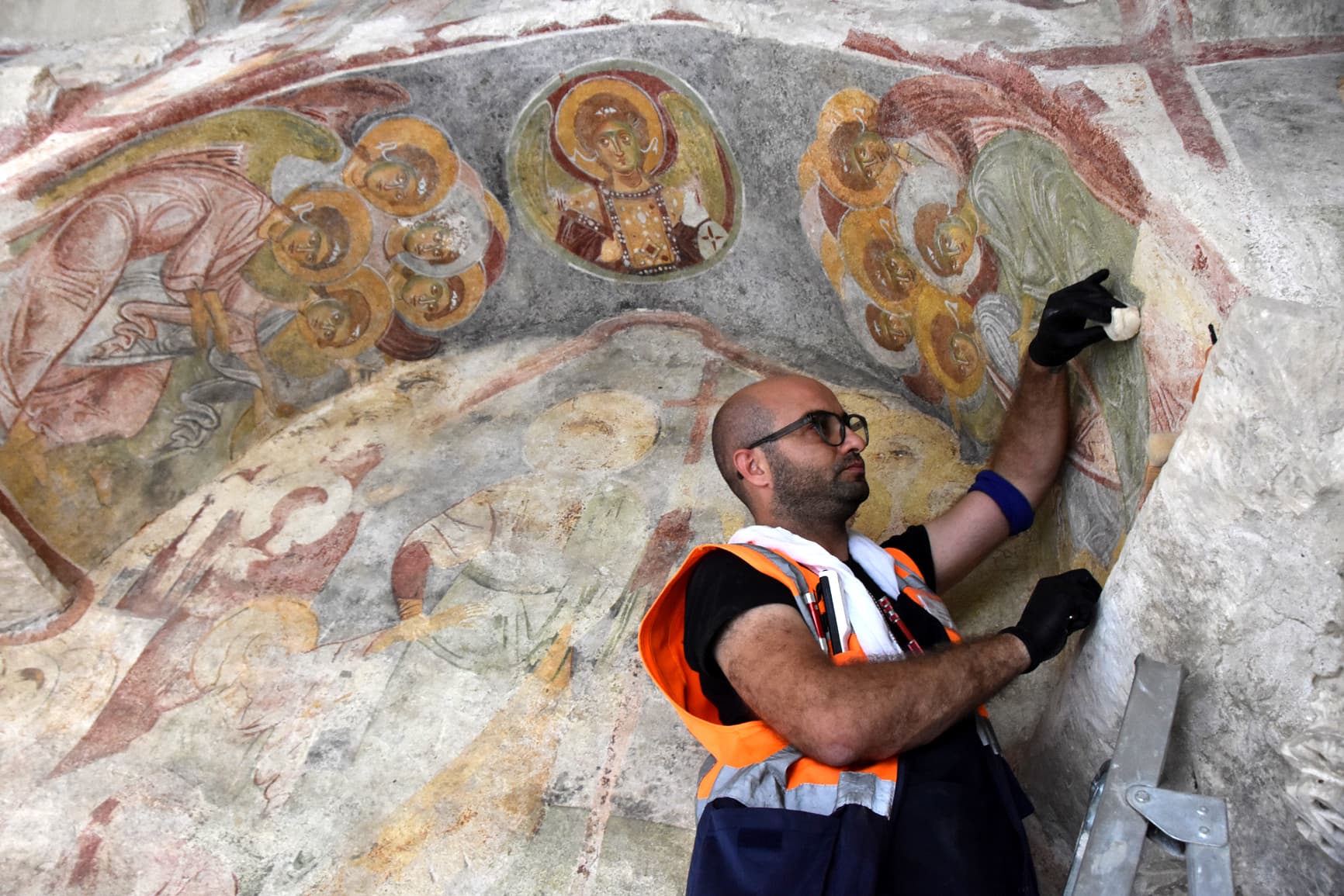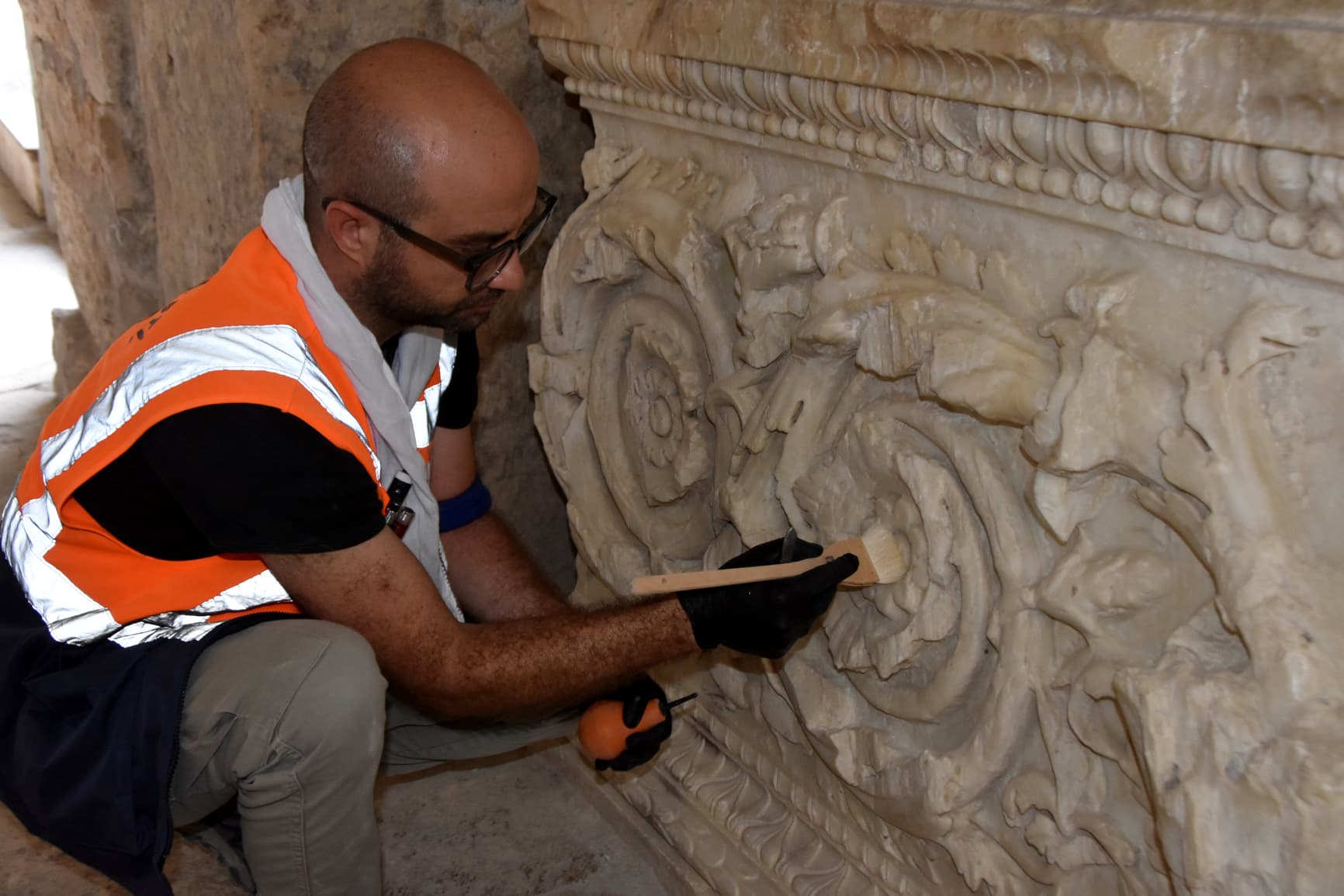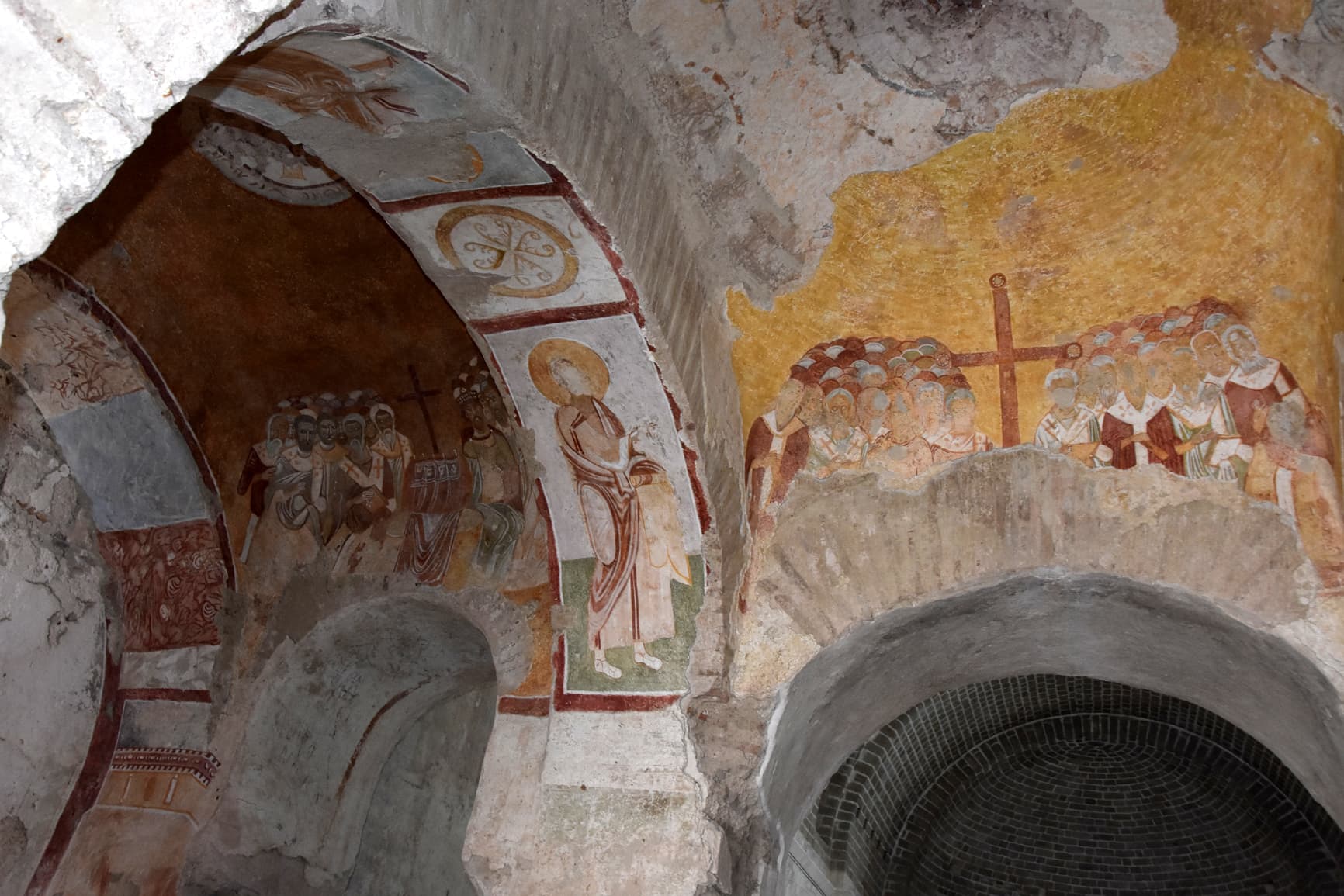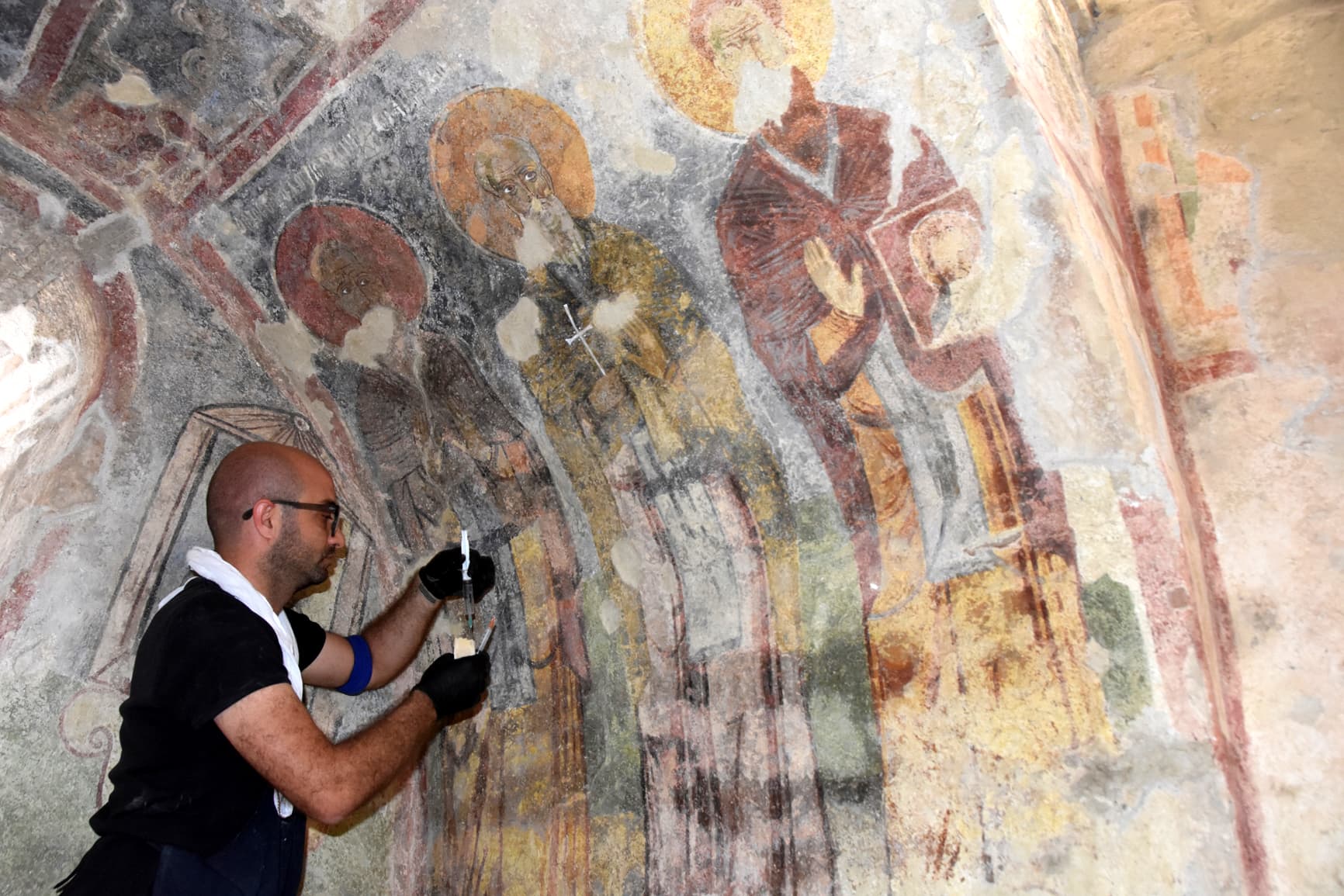

The wall paintings in the building are being cleaned and strengthened in the monument museum of St. Nicholas with the restoration and landscaping project carried out by the Ministry of Culture and Tourism. It is known as 'Santa Claus' in the Demre district of Antalya. New murals from the 11th century were unearthed during the work at the memorial museum.
Restoration and landscaping work continues at the St. Nicholas Memorial Museum is one of the holy places of the Orthodox world. It is in Demre district, by the Ministry of Culture and Tourism. Within the scope of the works, the documentation and conservation works of the museum's 11th and 12th-century wall paintings continue. A team of 3 people headed by High Restorator-Conservator Cultural Heritage Conservation Specialist Uğur Yalçınkaya under the supervision of the Demre Lycian Civilizations Museum Directorate. Scientific analyzes of the original materials that make up the wall paintings and their deterioration are carried out using advanced techniques.
All Murals Digitized
Uğur Yalçınkaya gave information about the works. He used the following statements: "In the analysis, information about the materials used in the production of the medieval paintings and the methods of production were revealed. The condition of the paintings and the repairs made in previous periods were examined. Inspections were made to detect the deterioration in the paintings. Imaging techniques such as, side light shots and orthophotos were used. The previous states of the paintings were documented. All wall paintings were closely examined by approaching scaffolds, transferred to sheets, and digitized. According to the information obtained, wall paintings were used in the Middle Ages, using mineral pigments on lime-based plasters, the 'Secco ' (painting on dry plaster) technique. Many elements such as brush sizes, compass marks, and the transitions of daily working fluids on the paintings were determined."
Stating that the deterioration in the wall paintings and their causes were determined, Yalçınkaya said, "It has been determined that the preservation of these paintings is equivalent to the preservation of the building they are in. The new roof to be built after the restoration works, the reinforcement of the building and the completed underground and rainwater drainage system will make the paintings more sheltered. The paintings are reinforced by injecting plaster and paints, special materials that make up the wall paintings. The paintings' surfaces are cleaned with special materials due to environmental conditions. The paintings are made more visible and understandable. After the conservation work on the paintings is completed, they are periodically checked. "If they are taken care of, the murals in the St. Nicholas Memorial Museum will be an important cultural heritage that we can pass on to future generations," he said.
Demre Lycian Civilizations Museum Director Nilüfer Sezgin, describing the murals in the St. Nicholas Memorial Museum, said: "The paintings were made with the fresco technique in the 11th and 12th centuries. Wall paintings are the Bible, the Torah, the life of Mary, and the ordeal of Jesus. It consists of a single figure with its subjects. Apart from that, the scenes presenting sections from the life of St. Nicholas on the surface of the domes and at the vault level of the South Burial Chamber built in the south of the church appear as uric in Anatolia. Miracles such as protecting sailor families from storms, healing the magical sick, helping families without children are depicted, etc. Pictures in the South Burial Chamber were painted in the 12th century. Outside the South Burial Chamber, there is a scene of the apostle commission on the inner surface of the dome of the northwest chamber of the church. In the scene dated to the 11th century BC, Jesus offers bread and wine to his 12 apostles. There are council-religious meeting scenes. The capital of Byzantium, Constantinople, is effective in scenes dated to the 11th century, and the altar with the cross and the emperor and bishops can be seen around it. There are pictures of 4 Torah prophets on the arches."
Regarding the wall paintings unearthed during the works, Sezgin said, "During the conservation work carried out at the St. Nicholas Memorial Museum, scenes of the Pantocrator Jesus-The Lord of the Universe were unearthed on the inner surface of the apse of the 2nd Southeast Chapel, under the limestone layer. Scenes with various cross symbols belonging to the Christian faith were unearthed in the northern annex, dated to the 19th century. (Ahmet Acar- DHA)



